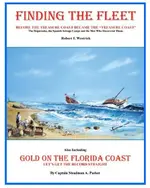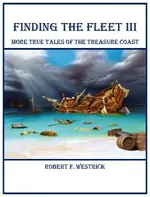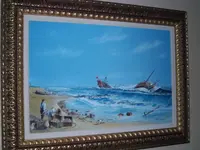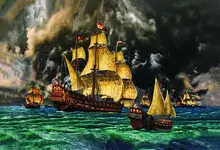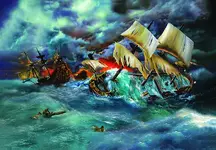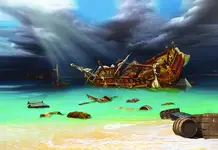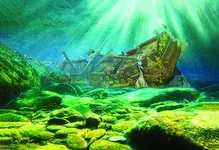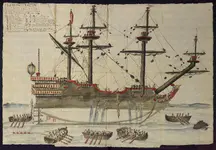Galleon Hunter
Full Member
- #1
Thread Owner
I often wonder what the "Treasure Coast" was like in the immediate aftermath of the destruction of the 1715 Fleet? It must have been both God aweful and incredible. Several paintings are out there depicting such scenes and three in particular I feel really capture the essense of the moment. I have been fortunate beyond words to have all three artists give me permission to use their work as cover art for a few books. "The Day After" by Ralph Curnow was used on the cover of Finding the Fleet. More recently the equally beautiful artwork of James A. Flood and John Redman was used for Finding the Fleet II and Finding the Fleet III.
It really must have been a memorable sight to see broken galleons, cargo, treasure and dead bodies strewn up and down the beaches.
"The Day After" by Ralph Curnow features the wreckage and destruction of the 1715 Fleet as a result of the hurricane on July 31, 1715. It was used courtesy of the 1715 Fleet Society as the cover artwork for Finding the Fleet published in 2015.
"Spanish Flagship After the Storm" by James A. Flood. In this painting the Nuestra Senora del Carmen y San Antonio, formerly HMS Hampton Court, is depicted days after the storm of 1715, gounded on the east coast of Florida, the only one from the Spanish Treasure Fleet to beach relatively intact. Dignataries from Cuba have gathered to develop a plan to salvage what they can from the wreckage. The painting is used as the cover artwork for Finding the Fleet II. (More of Mr. Flood's beautiful artwork appears inside the book).
And last but certainly not least, "San Roman Wreck" by John Redman. I think perhaps this may be my personal favorite of the bunch. The painting is used as the cover artwork for Finding the Fleet III. (More of Mr.Redman's beautiful artwork also appears inside the book)
It really must have been a memorable sight to see broken galleons, cargo, treasure and dead bodies strewn up and down the beaches.
"The Day After" by Ralph Curnow features the wreckage and destruction of the 1715 Fleet as a result of the hurricane on July 31, 1715. It was used courtesy of the 1715 Fleet Society as the cover artwork for Finding the Fleet published in 2015.
"Spanish Flagship After the Storm" by James A. Flood. In this painting the Nuestra Senora del Carmen y San Antonio, formerly HMS Hampton Court, is depicted days after the storm of 1715, gounded on the east coast of Florida, the only one from the Spanish Treasure Fleet to beach relatively intact. Dignataries from Cuba have gathered to develop a plan to salvage what they can from the wreckage. The painting is used as the cover artwork for Finding the Fleet II. (More of Mr. Flood's beautiful artwork appears inside the book).
And last but certainly not least, "San Roman Wreck" by John Redman. I think perhaps this may be my personal favorite of the bunch. The painting is used as the cover artwork for Finding the Fleet III. (More of Mr.Redman's beautiful artwork also appears inside the book)



